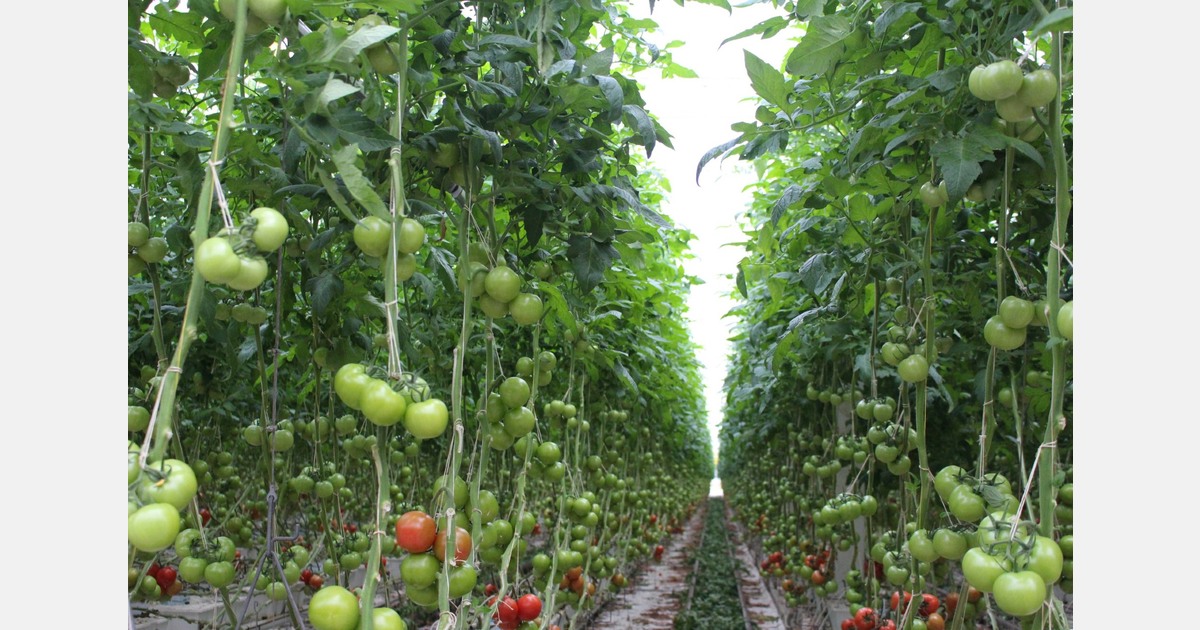
Australian greenhouse tomato growers are calling for an urgent shift in the national biosecurity response to Tomato Brown Rugose Fruit Virus (ToBRFV), advocating for its reclassification from ‘under eradication’ to ‘present – under management’. The industry claims the current eradication status – managed by Plant Health Australia’s incident response group – is no longer sustainable or aligned with global best practices, causing disproportionate economic losses, skyrocketing tomato prices for consumers, and delaying effective containment. “Growers can manage these biosecurity outbreaks better than the rules currently enable,” says Andrew Tout, chair of industry body Protected Cropping Australia (PCA).
Spread and status of ToBRFV in Australia
ToBRFV was detected in South Australia (SA) in August 2024 and is known to be present on four properties in SA. It was confirmed in Victoria in January 2025. The virus poses no risk to food safety or public health.
Since the virus was first detected in Australian greenhouses, containment efforts have focused on eradication. These include mandatory destruction of infected plants and surrounding crops, followed by prolonged testing and quarantine.
A recent case in northern Victoria has drawn renewed attention to the challenges of this strategy. At Katunga Fresh, a site previously affected by ToBRFV, routine testing of young plant material revealed a new detection. According to Agriculture Victoria, the source of contamination remains under investigation. The plants had only been on-site for a few days, and the infection is unlikely to have originated from the Victorian facility itself.
The seedlings originated from a commercial nursery in New South Wales, which has not previously reported any virus links.
The case underscores what many in the industry argue is a broader issue: seed and nursery pathways continue to pose a risk, despite heavy restrictions and eradication measures applied only at the grower level.
“The virus is present in the Australian industry. A seed batch from 2022 was one of the sources, meaning that the virus cannot be kept out of the country. The rules about eradication make no sense – it’s time to let growers do what they do best,” says Andrew.
Eradication unviable
“The government wants to eradicate it, and we get that, but it’s proven to be impossible,” Andrew says, referring to the UK. “The virus was eradicated there three times.” He also points to Europe, where the Q-status of the virus was removed. “The highest infection and spread levels were in 2022. After growers were given more possibilities to manage the virus, it reduced.”
He emphasizes that while the virus is highly transmissible through contact, seed, and water, it has shown limited spread once proper hygiene protocols are applied. “All Australian infection cases have remained contained. There has been zero transmission between greenhouses,” Andrew noted.
“Studies in Europe identified bumblebees as a major vector of intra-glasshouse transmission. These insects are not used in Australian glasshouses, reducing local spread potential.”
Commercial impact and grower frustration
An estimated AUD 40 million in commercial losses has already occurred across the sector, a number the industry says will escalate if crops in greenhouses continue to be pulled out. At the same time, prices for truss tomatoes are escalating, now reaching $10 per kilogram, with $14-15 per kilogram in sight. These are usually $6-$7 per kilogram this time of year.
“Not a single plant died from the virus – only from the intervention,” Andrew said.
He voices industry concerns about the government’s testing thresholds, which consider a plant “positive” at very low levels (called 32–35-38 Ct) and “suspect” at 38 Ct. By comparison, the Netherlands deems a “positive” result with a 30 Ct. “This is stricter than anywhere else globally and have led to the destruction of otherwise healthy plants.”
Growers assert that current protocols discourage reporting, as detection triggers crop destruction and economic loss. “Some growers are removing crops preemptively rather than risk a positive result,” said Andrew. “We’ve created a system where it’s safer not to test.”
Global comparisons and collaboration
The industry has been in communication with growers across Europe and North America. Measures like plant inspection, symptomatic removal, and hygiene controls have allowed them to maintain production.
Australian growers advocate for adopting global standards in testing and containment and for acknowledging grower competence in managing the disease under commercial conditions.
“Growers are managing it better than eradication protocols allow,” Andrew said. “The impact of ToBRFV is lower than endemic viruses already present. The real issue is the imposed response.”
Call for transition to management
The PCA and affiliated growers are calling for a managed transition away from eradication. A shift in ToBRFV’s biosecurity classification would allow growers to implement their own hygiene protocols without mandatory destruction. Discussions are ongoing with Plant Health Australia to define a risk-based framework with transitional support, and to ensure individual states will follow the national strategy too. “The state market access remains an issue, as they can restrict market access to any given state irrespective of national strategy.”
PCA is lobbying to start the transition process, and Andrew explains it’s also a learning curve for the industry. “Growers were not present at the table before. We need to work more closely with the government, also to have other potential risks on the radar before they get out of hand.”
Risks for open-field growers
Andrew points out it’s not a topic only concerning the greenhouse growers or the CEA industry. He says processing tomato sectors – which use open-field systems and source from similar seed lines – also support a managed status. “They believe it is inevitable, and industry-driven containment will protect them best.”
He points out that distances between glasshouse operations and open fields in Australia far exceed those in European production clusters, further minimizing transmission risk from one contained facility to another. “But via seeds, they are still at risk. Moreover, growers around Australia, including in field environments, already frequently manage other plant viruses such as Potato Spindle Tuber Viroid (PSTVd), which is arguably worse than ToBRFV in terms of potential yield loss.”
A call for science-based cooperation
The sector acknowledges the need for a cooperative approach. “We’re not asking for deregulation. We’re asking for science-based, internationally aligned measures that give growers the ability to respond rapidly and maintain productivity.”
For more information:
Protected Cropping Australia
[email protected]
https://protectedcropping.net.au/
Source: The Plantations International Agroforestry Group of Companies
